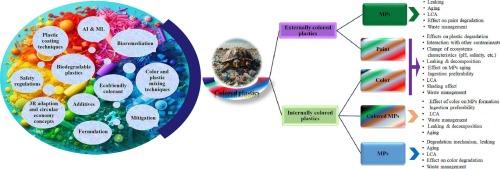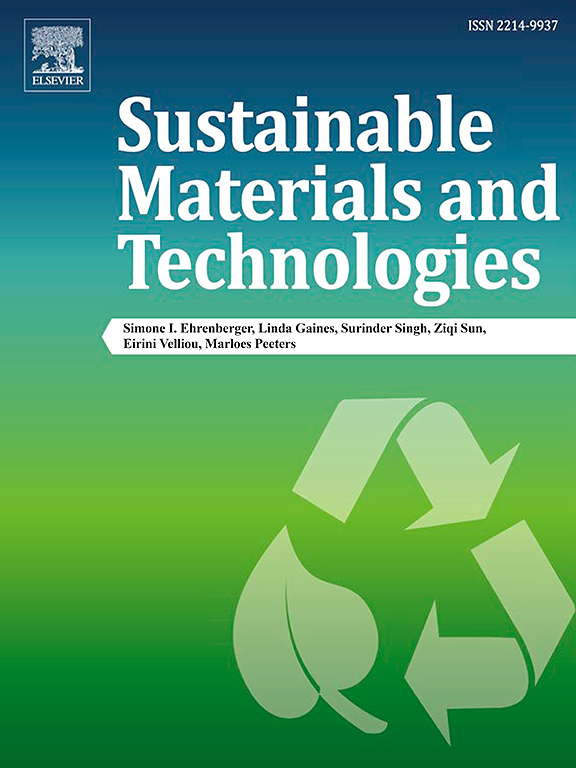Colours and microplastics: Bridging the gap between art, science and sustainability
IF 8.6
2区 工程技术
Q1 ENERGY & FUELS
引用次数: 0
Abstract
The significant influence of colour on life and the numerous advantages of plastics over metals, ceramics, wood and other materials result in the incorporation of colour into polymers through a variety of techniques, including internally and externally. The widespread use of plastics, inappropriate trash disposal and inefficient recycling result in a substantial release of plastic into the environment. Environmental factors, such as heat, light, moisture, chemicals and wind, can degrade polymers, altering the composition, structure and morphology to a certain degree. This situation can result in the production of microplastics (MPs) and nanoplastics (NPs) and associated chemicals. Ecosystems are seriously endangered by materials resulting from continuous deterioration, fragmentation and ageing of plastics. Majority of the commonly used plastics are coloured, underscoring the importance of closely monitoring coloured MPs. The influence of colour on MP formation, environmental effect, identification and waste management topics has not received enough attention. This review article addresses various concerns regarding coloured MPs, including their abundance, leaking, ageing, waste management and sustainability. Moreover, this work is based on research from field-based articles on plastics, MPs and coloured MPs. In the context of plastic pollution, future strategies for more effective mitigation of coloured MPs were also explored. Furthermore, this work attempts to assist in creating a clear road map for decision-making, selecting the optimal option for a given goal and developing a plan for expanding and improving an existing strategy.

色彩与微塑料:缩小艺术、科学和可持续性之间的差距
色彩对生活的重大影响,以及塑料相对于金属、陶瓷、木材和其他材料的众多优势,促使人们通过各种技术(包括内部和外部技术)将色彩融入聚合物中。塑料的广泛使用、不恰当的垃圾处理和低效的回收利用导致塑料大量排放到环境中。热、光、湿气、化学品和风等环境因素会使聚合物降解,在一定程度上改变其成分、结构和形态。这种情况会产生微塑料(MPs)和纳米塑料(NPs)以及相关化学品。塑料的不断劣化、碎裂和老化所产生的材料严重危害着生态系统。大多数常用塑料都是有色塑料,这就突出了密切监测有色 MPs 的重要性。颜色对 MP 的形成、环境影响、识别和废物管理的影响尚未得到足够的重视。这篇综述文章探讨了与有色 MP 有关的各种问题,包括其丰度、泄漏、老化、废物管理和可持续性。此外,这项工作还基于有关塑料、MPs 和有色 MPs 的实地文章研究。在塑料污染的背景下,还探讨了更有效地缓解有色 MPs 污染的未来战略。此外,这项工作还试图协助绘制清晰的决策路线图,为特定目标选择最佳方案,并制定扩展和改进现有战略的计划。
本文章由计算机程序翻译,如有差异,请以英文原文为准。
求助全文
约1分钟内获得全文
求助全文
来源期刊

Sustainable Materials and Technologies
Energy-Renewable Energy, Sustainability and the Environment
CiteScore
13.40
自引率
4.20%
发文量
158
审稿时长
45 days
期刊介绍:
Sustainable Materials and Technologies (SM&T), an international, cross-disciplinary, fully open access journal published by Elsevier, focuses on original full-length research articles and reviews. It covers applied or fundamental science of nano-, micro-, meso-, and macro-scale aspects of materials and technologies for sustainable development. SM&T gives special attention to contributions that bridge the knowledge gap between materials and system designs.
 求助内容:
求助内容: 应助结果提醒方式:
应助结果提醒方式:


